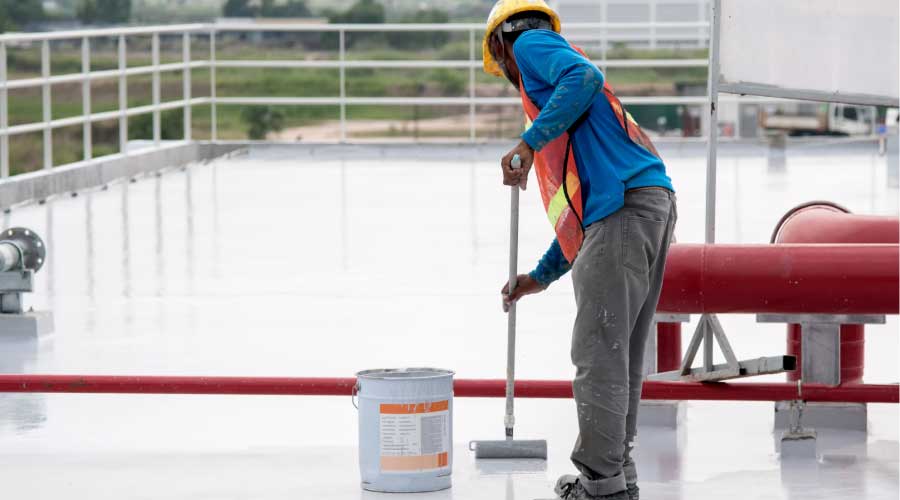Roof Coatings Can Protect Environment, Help Maintain Operating And Capital Budgets
Although protecting the environment and guarding a facility's operating and capital budgets can seem like separate — and sometimes opposing — goals, that's typically not the case when it comes to roof coatings. Used correctly, these products often extend the life of existing roofs. This reduces the need to install new roofing systems, conserving both money and environmental resources.
"To tear off a roof is very labor-intensive and very costly," says Van Ripps, president of Palmer Asphalt Company. "In comparison, the cost to properly coat a roof is quite modest."
In fact, "the whole roof coatings industry came about as a way of enhancing and extending the life of roofing systems," says Jeffrey Blank, vice president with SR Products and current president of the Roof Coatings Manufacturers Association (RCMA). Each year, 2.5 billion square feet of roofs are either replaced or re-coated, RCMA reports.
Roof coatings protect the existing roof and seal the roof seams, which is where water is most likely to penetrate, says Kurt Sosinski, market manager with Tremco Roofing and Building Maintenance.
In addition, some coatings, such as white or reflective ones, can mitigate the heat island effect. This can reduce energy use not just within a single facility, but in the whole city, again saving money and extending roof life.
Given these benefits, it's not surprising that shipments of non-bituminous coatings and cements have more than doubled since 2001 and jumped 40-plus percent since 2007, reports John Ferraro, executive director with the RCMA.
Roof Coating Preparation
For a roof coating to work as intended, a few preparatory steps are critical. One is a thorough inspection to determine the state of the roof, says Joe Mellott, director of business development with The Garland Company. If the insulation is wet or the roof is severely damaged, it may need to be torn off and replaced; a roof coating won't compensate for these faults.
When the true condition of a roof is difficult to determine, engaging a roofing professional to examine it may make sense. The roofing professional can use such tools as thermal scans to determine if moisture has been absorbed into the roof insulation or if it has other weaknesses that aren't readily apparent, Sosinski says. While this comes at a cost, it may end up saving tens of thousands of dollars if it becomes clear the roof doesn't need replacing. "If the roof is dry and in good shape, you can extend its life," he adds.
For example, St. Johnsbury Academy, a high school in St. Johnsbury, Vt., had looked into replacing the 26-year-old roof on its field house. However, the unusual roof design — it features six large parabolic sections — boosted the potential cost of a replacement. Instead, the school was able to apply a urethane restoration coating at a much lower cost. The coating is designed to extend the life of roofing systems for at least ten years and protect against the damaging effects of UV radiation.
Once it's determined that a roof is a candidate for a coating, the surface should be dry and free of any debris. "Most coatings don't do well in ponded-water situations," says Mellott.
Not surprisingly, the type of roof can dictate the appropriate coating. For instance, an aluminized asphalt coating will chemically weld to the surface of an asphalt roof, providing light rejuvenation, Mellott says.
Similarly, spray foam roofs often have a silicone coating, Ripps says. When the service life of the coating begins diminishing, it should be recoated with silicone, as this will minimize adhesion problems. "Not all coatings stick to each other," he says.
Related Topics:













